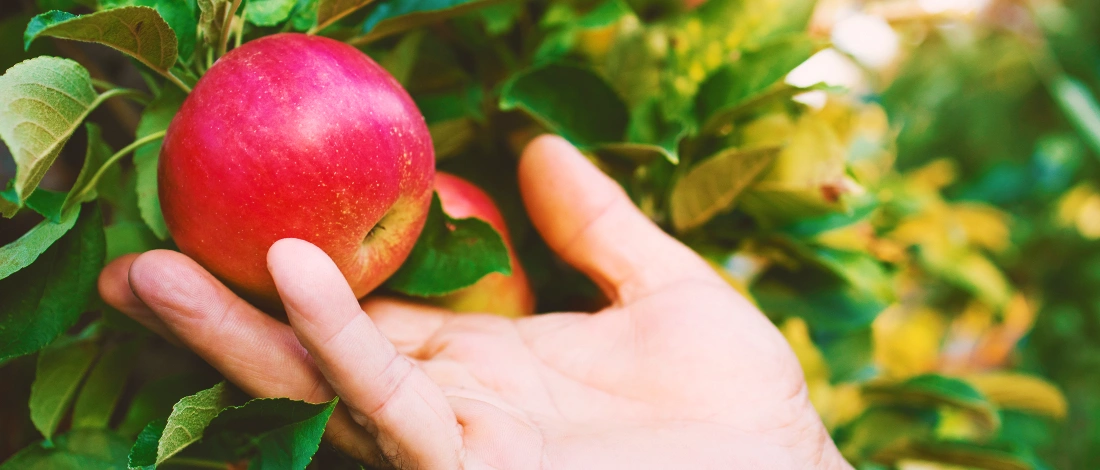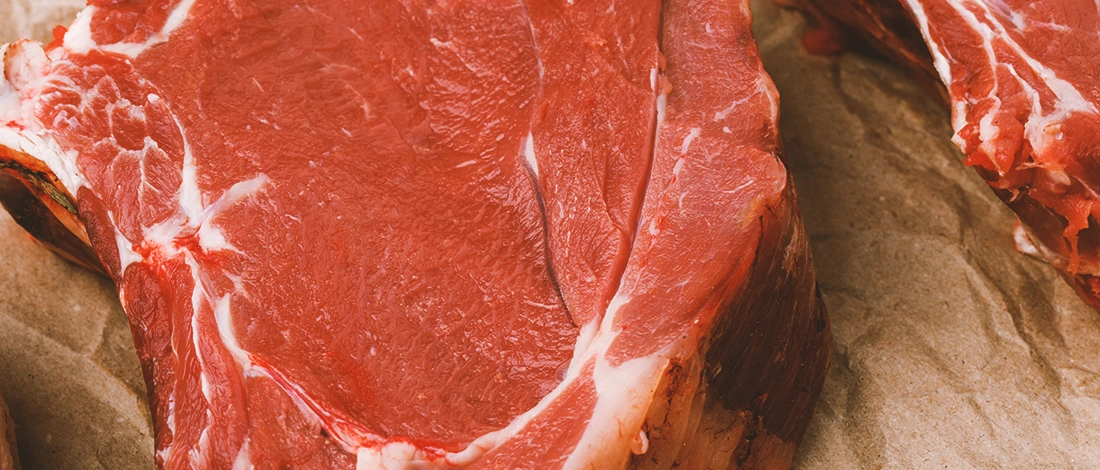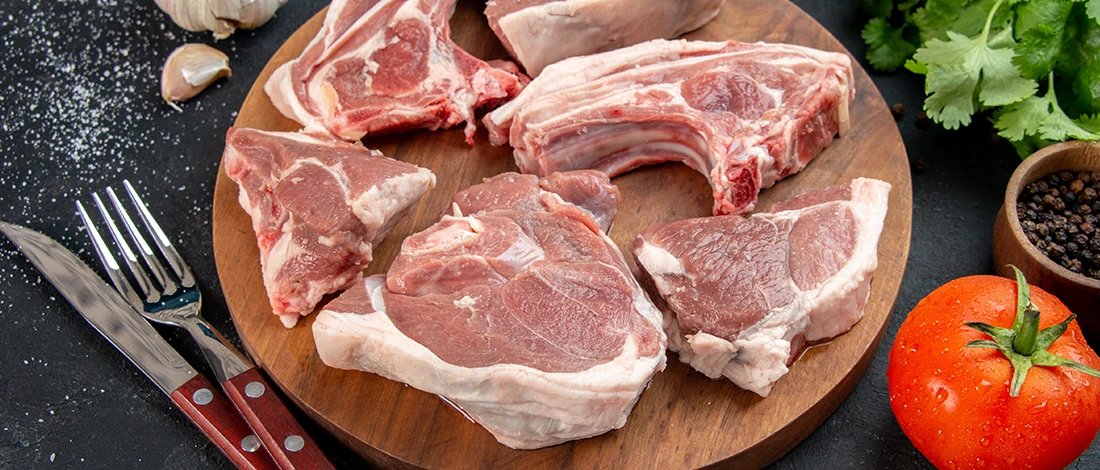The brisket, a notoriously difficult cut of meat to cook. Mastering a great brisket takes preparation, time, and a lot of patience. If you go into it blindly, you’ll just end up with a chunk of beef jerky, wasted time, and wasted effort.
Don’t let that put you off though - pitmasters alike can agree that it is more than worth it in the end, for that crispy, juicy brisket.
Of course, first, you need to know when, how, and even why you should wrap a brisket. That’s why, as experienced Carnivore Style brisket cooks, we have put together everything you need to know about wrapping, cooking, and smoking a brisket.
Quick Summary
- Wrap a brisket when the internal temperature reaches 165-170°F, depending on brisket size, smoker temperature, and preference.
- Wrapping aids in faster cooking, retains juiciness, and controls bark appearance.
- A 2006 study published in the National Library of Medicine found that cooking meats wrapped in aluminum foil increases their aluminum content ranging from 76% to 378%, yet suggesting no evident health risks within provisional tolerable daily intake levels as per FAO/WHO guidelines [1].
- Two methods include using foil for faster cooking or butcher paper for smoke flavor.
When You Should Wrap A Brisket?
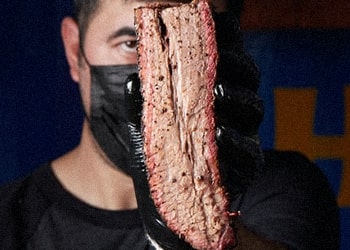
I should begin by saying, there really isn’t a straightforward answer.
Before you click off in defeat, don’t fret. I’m here to guide you down the smoked brisket road, and to a juicy beef brisket in no time.
When wrapping a brisket, there are 3 things you should consider:
The Brisket Size
Naturally, a bigger brisket will take longer to cook than one on the smaller side. This is because smaller meat briskets lose moisture much quicker than bigger ones.
The main reason to wrap brisket is to prevent your meat from losing moisture, therefore smaller meat should be wrapped earlier in your cook.
At Carnivore Style, we recommended wrapping an 8-pound brisket around the 3 - 4 hour mark, whereas a brisket around 12 pounds should be wrapped closer to the 6-hour mark.
Your Smoker Temperature
You’ll also want to take into consideration how hot you usually run your smoker. Otherwise, you might end up with too much smoke.
A higher internal temperature means a faster cook, which means you’ll get to wrapping your brisket much quicker than a slow cook.
Recommended Article: How to Regulate Temperature in a Smoker
Your Personal Preference
Just like any cooking process, a lot of wrapping brisket techniques relies on your personal preference. At the end of the day, you’re the one that will eat the barbecue, so you know how you best like your meat.
Most pitmasters recommend wrapping your meat when your smokers reach an internal temperature of 165 - 170 F.
Now, not everyone has the patience to wait that long. So, some people may prefer to wrap brisket as soon as the stall hits (usually around 145 - 155 F.) It may be the fastest method, but not guaranteed the tastiest.
Now, if you want the crunchiest, thickest bark possible, you won't want to wrap your meat till it comes out of the stall. It may seem counterintuitive, but the proof is in the pudding - or in this case, the delicious brisket.
The only way to figure out your personal preference when it comes to the cooking process is to experiment.
Try wrapping brisket at different points of your cook to find what taste and bark crunchiness best suits you.
Why Do You Wrap It?

Why wrap brisket in the first place? Well, there are three main reasons:
Faster Cooking Time
Any large slice of meat will hit the stall temperature. Your large cut of meat, the wrapped brisket, in this case, may be right on track to finishing when you expect it to.
But, as soon as the internal temperature of your barbecue hits 165 F, it stops cooking.
This happens due to evaporation. The meat begins to sweat, causing water to rise to the surface of the meat.
It then starts to evaporate, which in turn cools the cuts of meat. Once your internal temp hits, the stall begins, and it could last as long as 5 hours.
Wrapping brisket allows you to eliminate the air in which moisture can evaporate.
Around the surface of the meat, a layer of the brisket's own juices will form, keeping hot due to the hot air circulating inside your smoker.
The wrap works as an insulator, protecting the meat from direct smoke and heat.
Therefore, you can safely turn up the temperature of your smoker without worrying about burning or drying out your meat.
“Some foods will improve your meal, your mood, your day, your buttered noodles. Brisket will improve your life.”
- Stephanie Pierson, in “The Brisket Book”
Once this evaporation has stopped, your smoker will begin to rise in temperature, continuing to heat your meat.
This is good, since a brisket becomes more tender the longer it gets cooked.
You may have heard of something called the Texas crutch method. The Texas crutch first came around in the competition barbecue circuit.
During the competition barbecue circuit, judges gave out scores depending on the time in which the smoked meat is delivered.
Wrapping brisket, the traditional cut of Texas, helped competitors reach their deadline.
Juicier Meat
Wrapping your brisket allows the meat to reach all-time juiciness. Natural juices will be locked in and they’ll be able to tenderize the meat.
Since the cut has already soaked up all the smoke before stall time, you don’t risk over-smoking your meat.
Control The Bark
Wrapping brisket will allow you to have control over the bark and appearance of your wrapped brisket.
The average pitmaster will aim for a mahogany-colored bark, which not only looks delicious but tastes delicious too.
Again, this all depends on your personal preference. Some pitmasters wrap brisket as soon as the stall temperature hits, others wait till they get their desired bark thickness and color.
What are The Downsides?

Now, wrapping your beef brisket isn't all rainbows and unicorns. There are a few downsides when wrapping brisket, one being a possible loss of texture.
Risk Of Overcooking
Once the brisket is all wrapped up, the internal temp will begin to rise.
This rise in temp is rather unpredictable and it can vary on a whole range of things such as how tight the wrap is, how humid your smokers are, etc.
It is a common mistake to follow the recipe when cooking brisket rather than a probe thermometer.
It is far better to cook by temperature and not the time since timing doesn’t really mean anything when faced with mushy briskets.
Every 30 minutes or so, check the brisket’s temperature using a meat thermometer.
Simply poke through the wrapping until the meat hits 203 F. The hole won't affect cooking time, nor will it create moisture loss.
Loss Of Smoke Flavor
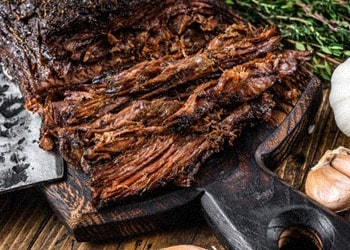
When you wrap a brisket, a barrier forms between the meat and the wood smoke.
Naturally, this will result in a loss of smoke flavor.
Although, it doesn't affect your smoke too much since the brisket has already been exposed to the smoke hours beforehand.
Generally, you won’t notice much of a difference in smoke flavor.
Plus, the wrapping keeps the packer brisket moist, making the bark tastier and the meat juicier.
Loss Of Bark Texture
Now, I know I said wrapping helps the bark crust texture, but bear with me.
Once you wrap a brisket, you’re exposing your brisket edges to extra moisture which speeds up the cooking process. In turn, the bark becomes softer.
To avoid this, you should cook the brisket at 225 F after removing your wrap to make the bark crispy again.
Don’t fret if the brisket quickly cools to room temperature once it’s been unwrapped, the meat will already be tender enough inside.
Wrapping Brisket Options

When it comes to wrapping briskets, there are 2 roads you can go down:
Barbeque experts either use aluminum foil or butcher paper for unwrapped brisket.
Aluminum Foil
Remember the Texas barbeque competition I mentioned? Well, these Texans sometimes use Aluminum foil on their briskets.
For beginners, wrapping unwrapped brisket in aluminum foil is recommended since it is the easiest way before moving on to butcher paper.
Since the aluminum foil is designed to wrap food, it’s only natural to wrap up your brisket in foil too. It’s also very accessible and cheap to purchase.
Foil is a great conductor of heat, and it’ll speed up the cooking process considerably.
However, a 2020 study published in the National Library of Medicine investigated the leaching of aluminum into food when cooked in aluminum foil, finding significant increases in aluminum content that, when combined with other dietary sources, could approach or exceed the World Health Organization's tolerable weekly intake levels [2].
As long as you measure the internal temperature of the brisket every 30 minutes, you won’t have to worry about your bark getting soggy.
To wrap a brisket inside a foil, you should measure two arm-length pieces of foil.
Lay the brisket on top of the two pieces of aluminum foil and wrap the brisket as tightly as you can.
The downside to wrapping the brisket in aluminum foil is the bark will get a little soft during the wrapping process.
Butcher Paper (Texas Crutch)
Butcher Paper, also known as the Texas Crutch, has become an essential tool for those seeking delicious smoked brisket, especially if they want to replicate that authentic Texas BBQ taste. If you order brisket at one of the top Texas BBQ joints, it's almost guaranteed they’ve wrapped it inside butcher paper.
Unlike heavy-duty aluminum foil, wrapping a brisket in butcher paper is the preferred method on a pellet grill. The reason? The paper allows the smoke to penetrate while still speeding up the cooking time.
When you wrap the brisket in butcher paper, a layer of moisture forms on the outside of the meat, which the paper soaks up. This retained moisture ensures juicier meat and assists in conducting heat, somewhat similar to wrapping meat in foil.
However, there's a marked difference. The butcher paper, being slightly porous, lets in a tad more smoke. As a result, you’ll gain more smoke flavor than you would with aluminum foil. Moreover, the bark of the brisket will stay drier, adding that much-desired crunch.
Using butcher paper to wrap your brisket does come with its learning curve. The process takes practice, and it may take you a few tries to perfect it. Thankfully, butcher paper is accessible. You can purchase it online or grab some from your local butchers.
Despite its advantages, cooking with butcher paper does have some drawbacks. One of the primary concerns is the stall in cooking time. Since butcher paper isn’t as airtight as foil, the brisket will take longer to cook. But for many, the end result of a juicier, smokier brisket is well worth the wait.
6 Steps To Wrapping A Brisket

Now you’ve figured out what you’re going to use to wrap a brisket, we now have to learn how to wrap.
Through many smoking and bbq tribulations, I finally found a method that works for me. You may have heard of a method by Aaron Franklin of Franklin Barbecue called the Texas Crutch [3].
Aaron Franklin uses a piece of butcher paper around 5 times as long as your brisket.
Here is how you can do it:
- Grab your butcher paper and place the brisket widthwise, presentation side up. Fold the bottom edge of the sheet up until it’s covering the meat. Make sure to pull it as tight as possible. The sheet needs to fight snug around every side of the meat.
- While keeping the butcher paper tight to the shape of the brisket, fold the paper over the flat side until you have a triangle shape. Make sure the sheet is smooth and flat.
- Turn the brisket around so the triangle is now facing away from you. Fold the sheet under the point and hold it in place. Repeat this triangle fold so it looks the same as the one on the flat side.
- While keeping the brisket firmly against the butcher paper, fold it towards the end of the paper. After rolling the meat up, fold in the sides and pull the paper tightly.
- Once the brisket is fully wrapped with the butcher paper, it should look more or less like a long rectangle. To double its thickness and halve its length, you should fold the rectangle over itself.
- The aim of the game is to keep everything tight and snug. With the remaining part of the rectangle sheet, roll the meat forwards and over. The presentation should be facing side up once again, with the thick side underneath the meat.
And there you have it, the perfectly wrapped brisket with butcher paper.
Read More:
BBQ Brisket Rub
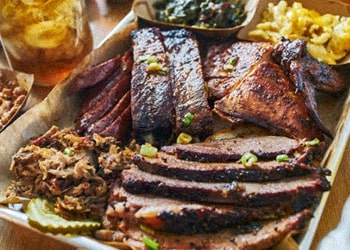
When it comes to flavors of the bbq meat, a lot of people tend to go too complicated with cumin, chill powder, paprika…. When all you need is an even part of salt and black pepper.
This simple style will complement your bark while letting the juicy beef smoke flavor shine through.
The secret to how a great brisket cooks doesn’t rely on fancy rubs, BBQ sauce, or brisket recipes.
It all depends on how you plan on smoking your meat, as well as how you select, prepare, and cooking a brisket.
FAQs
What Is Pink Butcher Paper?
Pink butcher paper is a chemical and wax-free, tear-resistant paper used in steakhouses and for smoking or cooking meat. Known for its peach-like color, it is both durable and food-safe, offering an alternative to freezer or white butcher paper.
Does Smoke Penetrate Butcher Paper?
Yes, smoke can penetrate butcher paper, allowing the meat to absorb the smoky flavor while retaining moisture.
Should You Wrap Brisket When It Stalls?
Yes, you should wrap a brisket when it stalls can help to push through the stall, retain moisture, and accelerate the cooking process.
References:
- https://pubmed.ncbi.nlm.nih.gov/22063217/
- https://www.ncbi.nlm.nih.gov/pmc/articles/PMC7696975/
- https://www.masterclass.com/articles/how-to-wrap-smoked-brisket-with-pitmaster-aaron-franklin


